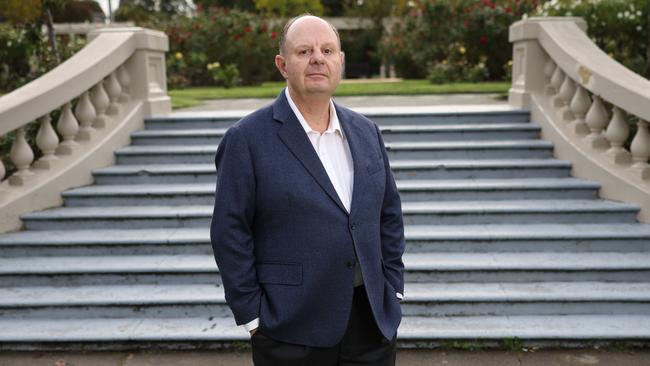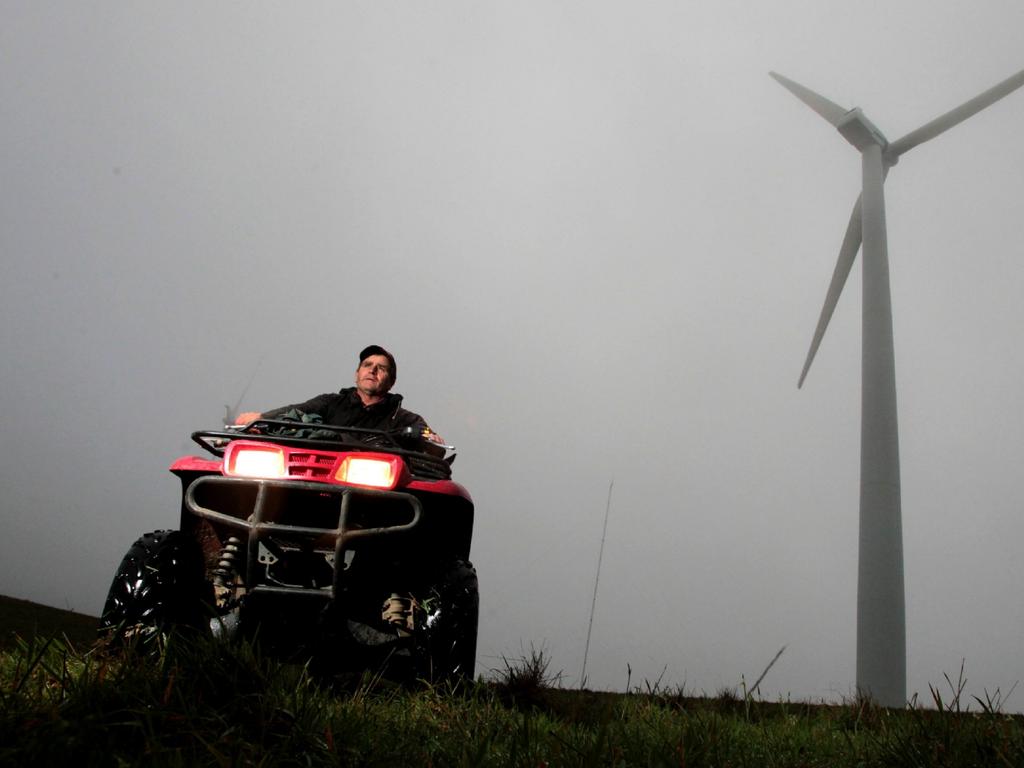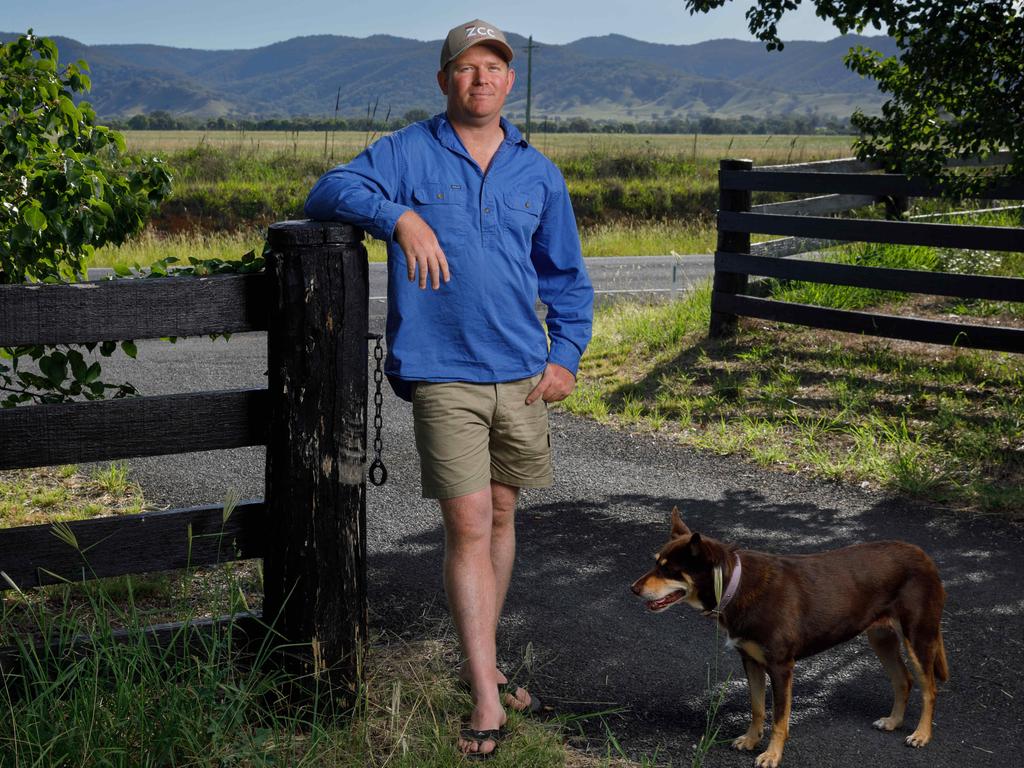The renewables rollout needs an overhaul, says former energy and infrastructure boss Andrew Dyer
The renewables transition is underway but recently retired energy and infrastructure commissioner Andrew Dyer says there are still big questions over which projects are to be built, and where.

Australia’s random renewable-energy push needs to be overhauled and a nationwide stocktake is required to determine what should be built and where it should go, according to the country’s recently retired energy infrastructure commissioner.
Andrew Dyer, who has been at the forefront of Australia’s renewables transition for nine years, also said there was merit in examining nuclear power – a position that will buoy the federal opposition which is ramping up a nuclear energy plan that has been panned by the government.
In a wide-ranging interview with The Weekend Australian days after his retirement, Mr Dyer’s assessment of recent progress is blunt: random renewables development has to stop and an orderly and transparent pipeline of viable projects is required if the country is to meet the federal government’s ambitious green energy targets to replace ageing coal power plants.
Mr Dyer stopped short of calling for a pause on the rollout but said a reassessment was needed to ensure the right solar, wind, transmission and battery projects were being built in the right locations.
He said the current development pipeline contained projects that might never progress because they were badly conceived or in the wrong place, causing unnecessary community unrest, bogging down the planning process and potentially delaying the race to replace retiring coal assets by 2034. An engineer who has worked in the nuclear industry in the US, Mr Dyer said that, notwithstanding the difficulties and time constraints in starting a nuclear industry from scratch, it was worth examining.
“We need to start looking at it at some point and perhaps now is a good time. If we are going to look at it this century we should start sooner rather than later.’’
As Energy Infrastructure Commissioner, Mr Dyer was responsible for community complaints about wind and solar farms, energy storage and new transmission lines as well as promoting best practice for industry and government. He stepped down from the independent role months after releasing a critical community-engagement review that recommended weeding out cowboy developers who were terrorising regional communities.
He recommended a voluntary developer rating system to encourage reputable operators but has gone further to propose an overhaul of the development process. “Renewable energy has been a non-regulated, non-controlled, open access regime for a long time,’’ he said. “There were some good reasons for doing that because you want to stimulate a new industry and get projects off the ground and bring down the cost curve. But if we’re going to rely on it to replace coal, we can’t rely on random developers mucking around with projects that may or may not happen.
“Many developers are land speculators, not actual developers of the project. So they’re looking at it from a very different lens, than say, the person who’s trying to keep the lights on.’’
Mr Dyer said the states must seize control of the process, guided by well-thought-out generation grid plans and proper community consultation.
“We need to figure out what we need to build and where we need to build it,” he said.
He said work was underway to align generation and grid plans and some states would have it easier than others, depending on the level of government ownership of the generation, grid and distribution networks. “They all know they have to do it … but it will be harder in Victoria and NSW than say Queensland, Western Australia or Tasmania,’’ he said.
Planning deficit
Mr Dyer acknowledged that people might be surprised to learn that the sort of granular planning required for a once-in-a-generation transformation to secure the nation’s energy supply still had not happened. He avoided assigning blame, but a spokeswoman for Mr Bowen on Friday blamed the opposition for trying to stall the transition for 10 years and failing to make the necessary reforms to improve how energy projects were rolled out in communities.
“The Albanese government is taking a different approach by working with communities, jurisdictions and the sector to get it right,” the spokeswoman said. “This includes commissioning the Community Engagement Review with Andrew Dyer, and we are working closely with state and territory governments, industry and councils to respond to the report’s recommendations – such as working together on options for a developer ratings scheme and more reforms.”
Mr Dyer’s comments will validate concerns in regional communities overrun with developers scoping out wind and solar farms and country councils worried about the cumulative impact of proposals and pressure on roads, water, waste and housing.
He cites the example of Muswellbrook Shire in NSW that forecast an average 10 over-size and overmass truck loads every night for the next 10 years on the Golden Highway to Dubbo, in the Central West Orana Renewable Energy Zone.
As energy and infrastructure commissioner, Mr Dyer was known for getting out to communities, not just to mediate disputes but to see for himself what a report could not convey. The thought of 10 huge trucks every night on that narrow stretch of road left an impression: “I counted two overtaking lanes on 243km of that highway and about six places where a truck could pull off,’’ he said.
For all the problems, he said there were lucrative opportunities for landholders and communities and many good developers were embracing the proposed ratings system because the cowboys gave them all a bad name.
Team effort needed
He said the transformation had to be a whole-of-government response with the federal government introducing the developer ratings system and providing a safety net to help the states progress their plans. “We probably need a daily snapshot of where we are today, where we need to be by 2034 and what’s the gap,’’ he said.
He used 2034, the forecast end of coal, as a target rather than the government’s 82 per cent by 2030 goal and would not be drawn on whether the government target was achievable. “I tend to work more around the coal dates. To me, that’s what we’re doing here, replacing coal,’’ he said.
Is he confident, on current projections, we will get there?
“A lot of work needs to be done in the next 12 months to really lock down how are we going to build the stuff, who makes the decisions and what needs to be built,” he said. “Then we really need to get on with it.’’
Under the Dyer system the states would determine which areas were suitable for a particular development and invite developers to bid for that project.
This would replace the open-access prospecting model under which developers armed with an aerial map often generated in a distant city office descend on communities with grand plans and big promises. “It’s so important to look at the right sites and the projects that we know we can get up,” he said. “Because you can waste a lot of time on a bad site with a bad developer or (one) that has something else wrong with it. And if you look at the current pipeline around Australia, there are a lot of those that are not moving.”
Hurdles and solutions
He cited projects too close to towns, national parks or world heritage areas, projects too far from transmission lines, or proposed sites with particular access problems as examples destined for years of planning delays and legal problems. The fallout for communities could be serious.
Mr Dyer said clarity was needed around decommissioning wind turbines and solar farms – without proper contracts in place landowners were at risk of being lumped with huge costs, he warned. Similarly, he has encountered problems landholders have experienced around land tax and levies. “There’s a long list of things we need to fix,’’ he said.
As a start, he said a pipeline of all the projects around the country could be used to assess which projects were needed and which could “go to the keeper” and were “a huge distraction’’
A federal bipartisan committee could be worth considering, he said, to assess the options to replace coal, including the role of gas and nuclear.
Bipartisanship was important and achievable, he said. He’s seen it for himself. When he was first appointed Wind Farm Commissioner by then environment minister Greg Hunt during the Turnbull government in 2015 he faced strong opposition.
“When I started the states were suspicious,” he said. “Labor, the Greens, a raft of people were out to kill the role. But I survived four changes of ministers, and the change of government. So we were probably doing the right things.’’
In March 2021 his role was expanded to address a broad range of energy infrastructure matters and Mr Bowen said Mr Dyer had led efforts to promote best practice and information, working with government, scientists, experts, industry and community.
Plaudits all round
Mr Hunt noted that Mr Dyer had succeeded under governments of different persuasions, saying he was pivotal in helping to resolve competing issues.
“He never lost sight that progress is a balance between worthy projects and people’s innate rights to live with a sense of security about their land and their homes,’’ Mr Hunt said.
Across the political divide, Victoria’s Energy Minister Lily D’Ambrosio said Mr Dyer was an important advocate for communities and spent as much time advocating to industry as to governments. She said it was an important role that held all parties to account and says Victoria is on the way to mapping and delivering projects in line with his recommendations.
End of an era
Mr Dyer said he felt a great sense of achievement after nine years across two roles but, facing his 61st birthday, and with a wife a decade older, he decided it was time to retire from a job that had become seven days a week. “We’ve not been on vacation for nine years,’’ he said. “And it was good timing. I’d done the report and got that around all the states. It’s a good time for them to bring in someone who can take it to the next step.”
Public servant John Sheldon, who has worked on community engagement, energy infrastructure and transmission, has been appointed interim commissioner and a permanent appointment is expected by June.








To join the conversation, please log in. Don't have an account? Register
Join the conversation, you are commenting as Logout